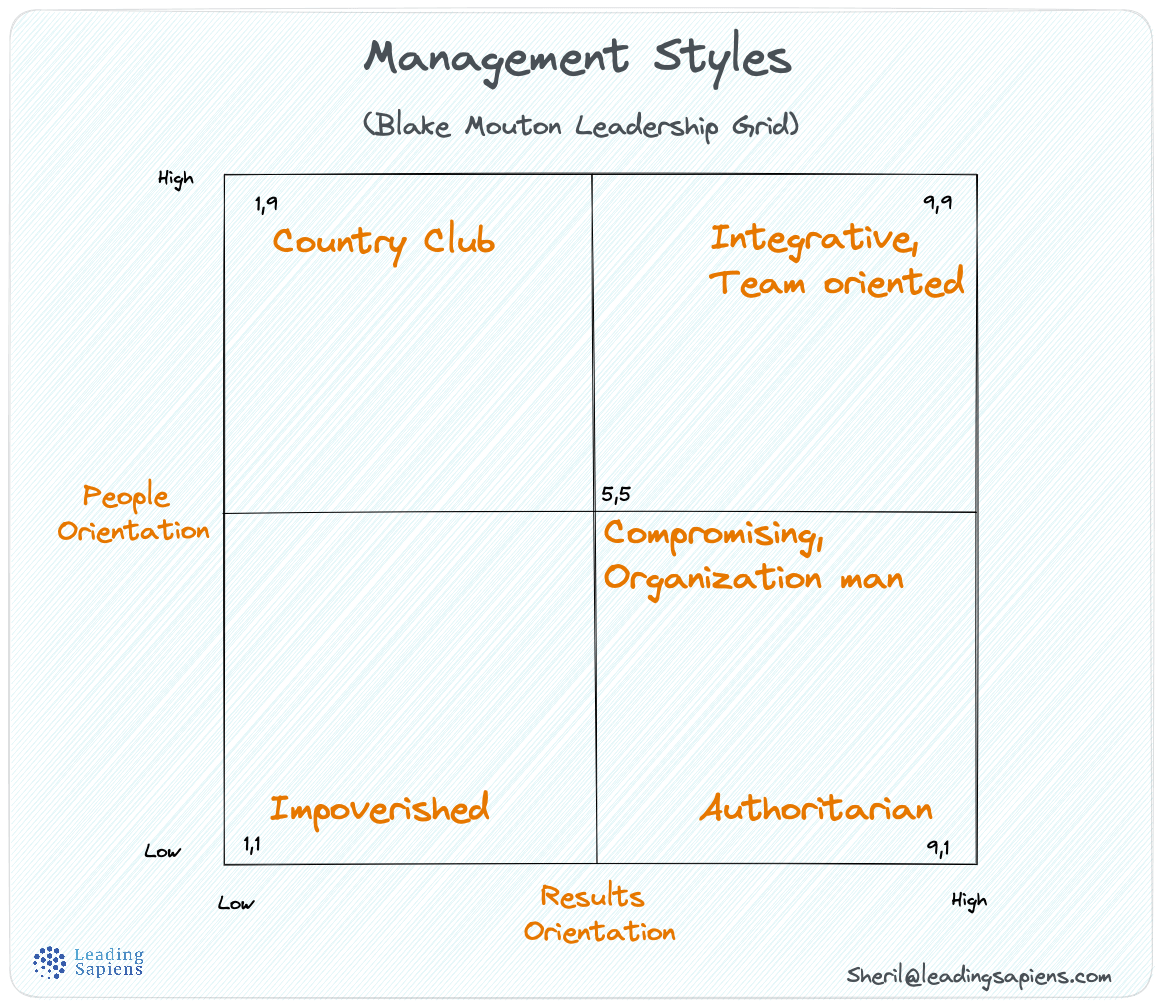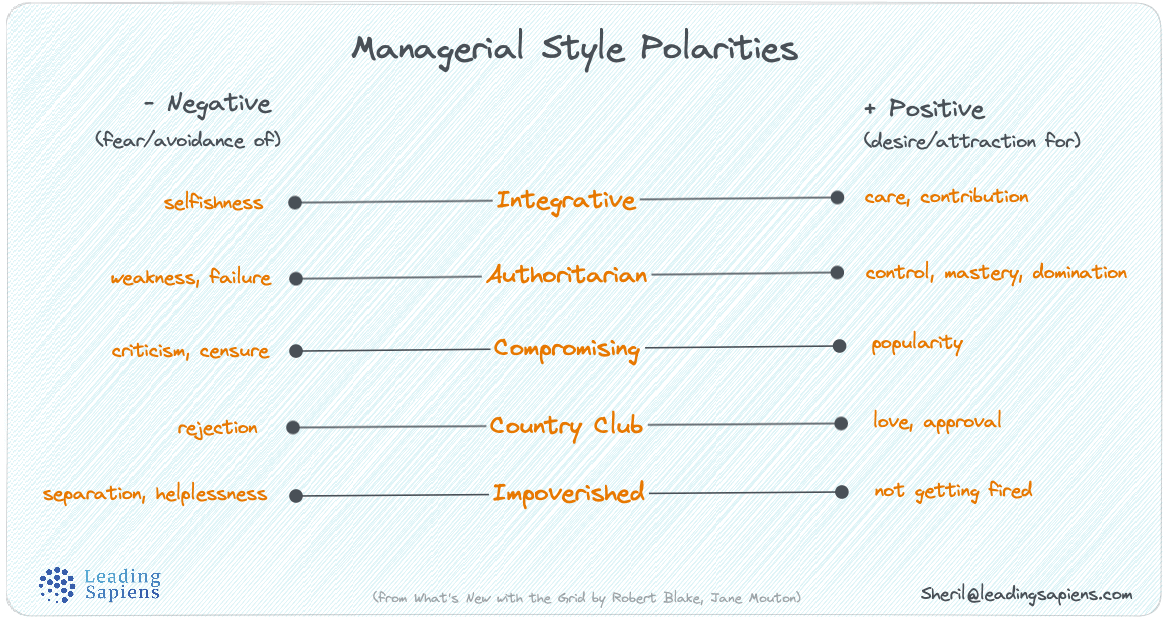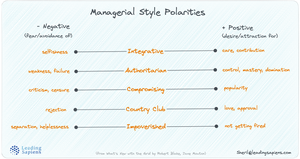Most leaders and managers tend to fall into patterns in how they go about balancing between prioritizing people concerns vs needs of the organization. Not being aware of these biases creates imbalances. Understanding different leadership styles opens up potential areas for improvement.
In my managerial career, it was common to come across managers who struggled to give critical feedback. They wanted to be “friendly” and ended up doing more damage than good. In contrast, there were others who were too task focussed and completely oblivious to the "people" needs of their team. Neither approach works well.
The skill in management is to do both — what Jim Collins calls embracing the "Genius of the AND" rather than succumbing to the "Tyranny of the OR" — thinking that it has to be one way or the other.
All managers have to learn this through trial by fire, and achieving balance is the essence and skill of good management. Fortunately there are models that can be used as good diagnostic tools.
Blake Mouton Leadership Grid
The Blake Mouton Leadership Grid, originally called the Managerial Grid or the Grid Theory of Leadership, is a classic model that captures leadership styles and managerial attitudes and behaviors.

It maps different styles of management and leadership on a 9x9 grid based on two primary criteria:
- People orientation on the vertical axis : characterized by focus on team members' interests, development, social needs and participation.
- Task orientation on the horizontal axis: characterized by focus on organizational objectives, efficiency and productivity.
The grid identifies 5 distinct styles of leadership and management that straddle the extremes of balancing the two orientations of people and tasks.
The five leadership styles
Most leaders tend to have a default go-to style with possibly another that they use in extreme situations. Each style has its own set of characteristics.
1. Impoverished style (1,1)
- Characterized by a low concern for both tasks and people.
- Classic symptom of managers who are disengaged or on their way out.
- Mantra: preserve the status quo - a laissez-faire style.
- Show a minimal amount of initiative and exertion coupled with avoidance of responsibility and commitment. They do just enough to get by or not get fired.
2. Country Club style (1,9)
- This style is more concerned with maintaining relationships, and less so for results and productivity.
- "People pleasers" is one extreme in this category.
- Focussed on creating a positive work environment. Characterized by a friendly environment and easy tempo but sometimes at the cost of performance.
- Often have low turnover rates.
3. Compromise, middle of the road style (5,5)
- Attempts to strike a balance between people and tasks, but ends up being not as effective at either.
- Often marred by mediocrity.
- "Don't rock the boat" is the mantra. Organization man.
- Focused on maintaining the peace and moving things forward. Avoids confrontation
- Can get accused of being opportunistic and called out as "weasels".
- Often the least effective due to changing priorities, and a lack of focus and conviction.
4. Authoritarian, dictatorial style (9,1)
- Taskmasters with a high focus on results and tasks but with little concern for relationships.
- People are simply resources and commodities to be applied towards achieving deliverables. Efficiency and getting results, even at a high human cost, is the focus.
- "Produce or perish" is their mantra.
- Power and control takes precedence over everything.
- The human element is often considered a liability.
- Often marred by a high turnover rate.
5. Integrative style (9,9)
- Shows high concern for both people and results. S
- Often characterized as "democratic".
- Skilled at managing both and navigating the tension by driving teams to common goals and results.
- Characterized by strong leadership that delivers results but that also enables development of people.
- A good balance of long term trust and development.
Polarities of each style
Each leadership style has its own set of positive and negative polarities – trying to avoid something while at the same time working towards achieving something. Recognizing and understanding these tendencies in our own approaches is a useful exercise.
For eg the authoritarian style is fearful of showing weakness and failure, while the country club style is more focused on avoiding rejection.

Bear in mind, reality is a lot more complex than this grid would have you believe. All of us will find a mix of polarities in how we operate.
The question is not which particular style we fall under, but rather what we are overlooking because of our dominant style, especially when that default style is not working effectively or is coming at a high cost of attrition or performance.
Using the leadership grid
The original use of the grid was as a predictive and prescriptive tool — trying to predict which managers will do best and prescribing the best approaches. Blake and Mouton's research mapped managerial behavior based on seven core characteristics:
- initiative (taking action)
- enquiry( being curious)
- advocacy (speaking out)
- decision making (evaluating and choosing)
- conflict resolution (resolving disagreements)
- resilience (facing challenges)
- critique (delivering feedback)
The primary thrust of Blake and Mouton's research was that the 9,9 integrative style of good balance between people and results tends to be the most effective. Granted, this shouldn't be news anymore, but it's still a good reminder.
As a diagnostic
While it’s predictive abilities are questionable, it’s a useful diagnostic tool for reflecting on your own leadership style and how it fits with the rest of your organization. It can highlight blindspots and biases that might be holding you back.
Managers with a strong task orientation will benefit from understanding what makes people tick. In contrast, people-oriented managers will benefit from getting better at setting objectives and stronger follow-up conversations.
Mixing the styles
While 9,9 integrative is the most preferred style, certain situations might require an authoritarian style.
Middle of the road management although considered mediocre might be best for sustaining performance in the long run without burning out the team. The country club style is not categorically bad either. If it's a group of high functioning independent operators, they might thrive best in an environment of minimum supervision and high camaraderie.
When taking over a new team, focusing initially on people is one approach. Over time you start balancing between (1,9) and (9,1), stabilizing at (5,5) and then eventually working up to operating skillfully at a high (9,9).
Reflection questions based on the grid
- What style maximizes the performance of your team?
- Which style do you naturally default to?
- What style do you avoid and why?
- What's your organization's dominant style?
- What is your manager’s style and how different is yours?
- In order to be promoted, what styles would make you more eligible ?
- Which style is congruent with your organization’s implicit leadership theory?
- Where do your managers fall on this grid? Can you identify their polarities?
Related reading
- We want to think there is a best leadership style, suited for all situations. But it's more subtle than we think, including some common misconceptions.
- A creative leadership style vs a controlling leadership style is another distinction between different types of leaders. One tries to control the energy of a system, while the other helps releasing it and multiplies the energy.
- Both organizations and individual leaders have notions of leadership that are implicit — what researchers call implicit leadership theory. Making sure your implicit theories of leadership aligns with that of your organization, plays a critical role in your success or failure.
Sources and references
- The Managerial Grid by Robert Blake and Jane Mouton.
- Blake, R. R., & Mouton, J. S. (1979). What’s New With The Grid®? Asia Pacific Journal of Human Resources, 16(4), 41–46. https://doi.org/10.1177/103841117901600412


